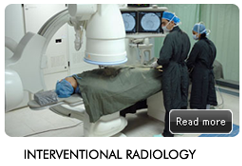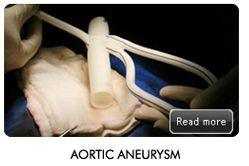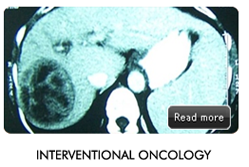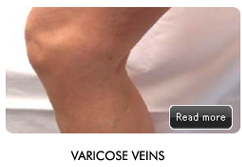- What Is Interventional Radiology?
- Who Are Interventional Radiologists?
- Is It A New And An Untried Speciality?
- What Is The Scope Of Interventional Radiology?
Blocks in various arteries which reduce the circulation to the site of supply, cause various problems such as renal failure/hypertension in renal artery blocks/stenosis; pain while walking or pain at rest or even gangrene due to decreased circulation in the legs, because of blocks/stenosis in the arteries of the legs, stroke due to blocked arteries in the neck. These blocks/stenosis are treated by opening up the arteries by angioplasty and reinforcing the result by using various stents; hence the terms renal artery angioplasty/ stenting, peripheral angioplasty/stenting, carotid angioplasty/stenting.
When there is excessive bleeding due to various causes such as bleeding from the intestine due to various causes, from a benign tumour of the uterus such as a fibroid; then various materials such as tiny beads, platinum coils can be delivered directly into the artery supplying the site, which then block the blood supply causing the stoppage of bleeding and also healing of the affected site.
Specific types of cancer can be treated with chemoembolisation where high doses of chemotherapeutic drugs can be delivered directly to the tumour while simultaneously blocking the blood supply to the tumour. Liver cancers and metastasis to the liver can be best treated by this method
By a technique such as radiofrequency ablation, specialized probes can be delivered directly to the tumour, which deliver heat and kill the tumour, without damaging the normal tissue to a great extent.
A blood clot in your leg known as deep vein thrombosis can be removed by using clot busting drugs delivered directly to the blood clot, or stenting the affected segment, thereby preventing damage to the leg. To prevent these clots from migrating to the lung vessels, and causing permanent lung failure or death, specialized devices such as filters can trap the clot, and prevent damage.
Various cancers can invade the biliary system and prevent the secretion of bile needed for digestion into the intestine. This can lead to jaundice, life threatening infection and pain; this can be treated by directly approaching the biliary system through the liver and draining the bile, and then delivering stents which will permit the bile to be secreted back into the intestine; this procedure is known as biliary drainage and stenting.
Nonsurgical infertility treatments are available for both men and women. Varicoceles, varicose veins in the scrotum that can cause infertility, are closed using embolisation. Women can get blocked fallopian tubes opened with a catheter using selective salpingography.
When an artery increases in size it can burst and cause life threatening bleeding, this condition is known as an aneurysm of the blood vessel. These conditions can be treated by blocking the aneurysm by embolisation, or by using a specialized device such as a stent graft, which is a stent covered by a medical fabric, this prevents blood from flowing into the aneurysm; restoring normal blood supply
When a patient has bleeding in the brain due to conditions such as aneurysms, which are dilatation of the vessels in the brain which increase in size and burst; or due to abnormal communication of the arterial and venous vessels which are known as arteriovenous malformations. These can be treated by using specialized embolisation materials such as platinum coils or liquid embolisation materials such as medical glue.
- What Are The Advantages OF These Procedures?
- What Is Pulse Clinic?
Interventional Radiology is a branch of medicine which is devoted to treating various vascular and non-vascular conditions, through integration of clinical and imaging based diagnosis and minimally invasive therapy.
Interventional radiologists are doctors who specialize in minimally invasive, targeted treatments performed using imaging for guidance. They use their radiology background to read X-rays, USG, CT Scan and MRI and with the help of mainly specialized X-ray machines, use their expertise to guide tiny instruments, such as catheters, through blood vessels or through the skin to treat various diseases without surgery.
Interventional radiologists are specialists who have trained rigorously in minimally invasive interventions using imaging guidance; they combine their imaging background with clinical knowledge to treat various vascular and non-vascular pathologies.
We work in close consultation with the primary care physician or surgeon, to be sure that the patient receives the best possible care.
NO! Since the past 60 years interventional radiology is a tried and tested modality for the treatment of various vascular and non-vascular conditions which initially could be treated only by a major surgery. Interventional radiologists were the pioneers of the first angioplasty and later endovascular stenting, which were first used to treat blocked arteries in the legs, saving patients from surgery or amputation. With the progress of medicine and technology various conditions such as fibroids, GI bleedings, biliary blocks etc. can be treated.
With their expertise in imaging and the specialized and advanced training only in the field of non-surgical techniques with imaging guidance, interventional radiologists can treat a large number of ailments within the body by delivering the treatment directly to the source of the problem.
Although no medical treatment is 100% risk free, the risks of these interventional radiological procedures are far lower than the conventional form of treatment which used to be open surgery.
All of these procedures are performed with just a small puncture in the vessel, hence obviating the need of large incisions.
Most of these procedures require only 1-2 days of hospital stay as compared to surgical procedures which require 7-8 days.
Majority of the procedures are performed under local anesthesia as compared to open surgery which requires general anesthesia.
Risk, pain and recovery time are often significantly reduced
Radiation risk is negligible with trained interventional radiologists, since our training also incorporates radiation safety techniques along with the procedure technique and clinical knowledge.
Pulse clinic is a dedicated setup which deals with all minimally invasive/interventional radiological procedures. This centre is set up primarily with the intention of working in close consultation with physicians and surgeons to comprehensively treat the cases by interventional radiological techniques and medical treatment.




